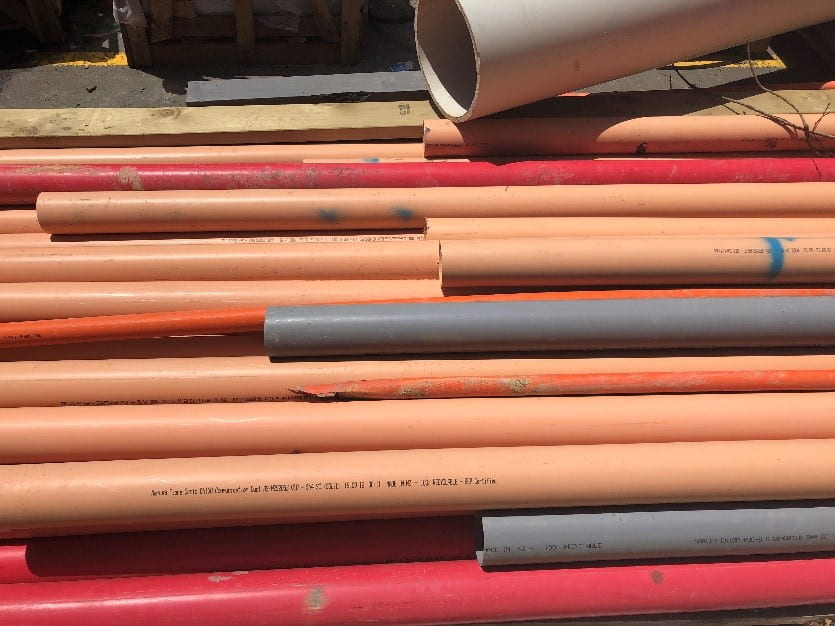An exploratory study is underway at Unitec to identify and quantify plastic waste streams, and their potential for recycling, from new-build construction. The study will inform a broader national study of the potential for diversion, of all materials, within the new-build and deconstruction sectors, including the economic implications of a range of models for construction waste processing with a medium-term goal to provide economic and sustainable alternatives to landfilling.
This study measures the waste product of the new build process, but does not measure the waste from construction demolition.

An example of the types of plastic pipes used in construction.
Approximately 80 kg of mixed plastic waste was generated from a residential development of 350m² floor area in Auckland
